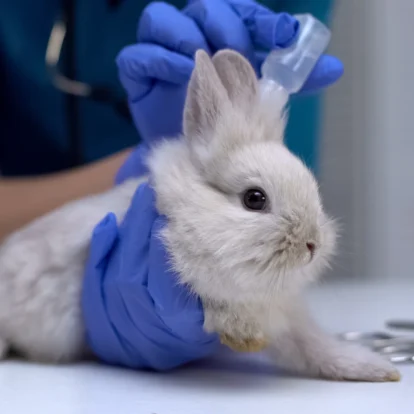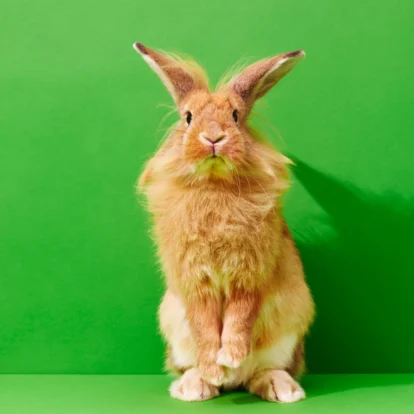Table of Contents
Introduction
Welcome to Mites in Rabbits 101! 🐰💕 If you, like me, are the proud parent of some hoppy, floppy-eared friends, you know just how joyful—and sometimes challenging—caring for them can be. Spotting a mite infestation early on in your rabbit’s life is crucial to keeping them as happy and healthy as can be.
I’ve been on the adventure into the world of mites in rabbits many times. These tiny terrors, not much bigger than a fleck of dust, can wreak havoc on a rabbit’s ear, skin, and general health in what seems like short periods.
In this article, I’ll take you through what I’ve learned from my own bunny battles against these pesky parasites, including the itchy issues they can cause for your furry friends. I’ll share my tale of combat against mite infestation and why understanding these critters is so important for any rabbit parent.
From red flags signaling discomfort to full-on infection, I’ll cover the most common ways mites manifest, how they impact your bunny’s well-being, and, most importantly, how to tackle treatment.
Whether they’re exploring the great outdoors or binkying around your living room, I’ll ensure you’re equipped to keep your rabbit’s skin safe and their ears twitching happily.
Prepare for an informative albeit fluffy ride through the ins and outs of dealing with mites, scratching only where appropriate, and helping your rabbit lead a hoppy life! 🐾✨
So, What Are Mites?
Oh, mites! 🐰 These teeny, nearly invisible critters might seem innocuous at first glance, but don’t be fooled—they can be quite the menace to our beloved bunny buddies. At the heart of it, mites are parasites that love to take up residence on animals, and, unfortunately, our fluffy friends are no exception. From the cozy depths of a bunny’s fur to the inner canyons of their ears, these parasites make themselves at home, causing anything from mild irritation to a full-blown mite infection.
Now, you might wonder, “Where do these freeloading pests come from?” 🤔 Well, mites are not too picky about their living arrangements. They can hitch a ride on anything—clothes, other pets, and even us humans! Yes, you heard that right; while mite infections from rabbits don’t commonly infest humans, these little stowaways can use us as a free Uber to get to our cuddly companions. This is why regular grooming and cleanliness are so vital.
Most rabbit mites live by feeding on the skin and oil of pet rabbits, which can lead to all sorts of uncomfortable symptoms in the infected areas. This is especially true if there’s an underlying illness or their immune system isn’t up to snuff, similar to how we might catch a cold when we’re run down. In severe cases, affected rabbits might show itching, dandruff, or fur loss. It’s a sight that would pull at any bunny lover’s heartstrings! 😢
I also need to hop on to another critical point—wild rabbits. Our domestic darlings might seem like they live worlds apart from their wild cousins, but they’re all ears in the same burrow regarding mite infections. Wild rabbits can carry mites and pass them along to our pets, especially if they’re exploring outside or if you happen to bring in bedding or feed from areas accessed by wild rabbits. This interaction is a prime example of how even healthy rabbits can suddenly host these uninvited guests.
While most cases of mites in rabbits are more uncomfortable than anything, they can escalate to be extremely painful and harmful to your bunny’s health without proper treatment. Think of it like this—if you had a bunch of unwelcome guests throwing a party on your skin, you’d be pretty desperate to evict them, right? That’s exactly how our poor bunnies feel. 🥺
Types of Mites in Rabbits
The most common culprits are the infamous ear mites and the sneaky fur mites, each hosting their own not-so-fun party on our bunnies.
Ear Mites
Ear mites are tiny critters that love to make a home in the cozy ear canal of your rabbit 😣. These little invaders are laying eggs and spreading like wildfire. The most common way these critters move in is through direct contact with an infected rabbit or even hopping over from other animals.
Symptoms of Ear Mites in Rabbits
Picture your bunny shaking its head or scratching its ears more than it’s thumping for treats. That might be a sign of an ear mite shindig. Other tell-tale signs include crusty, waxy debris inside the ear and, in severe cases, a head tilt that screams more horror movies than adorable pet.
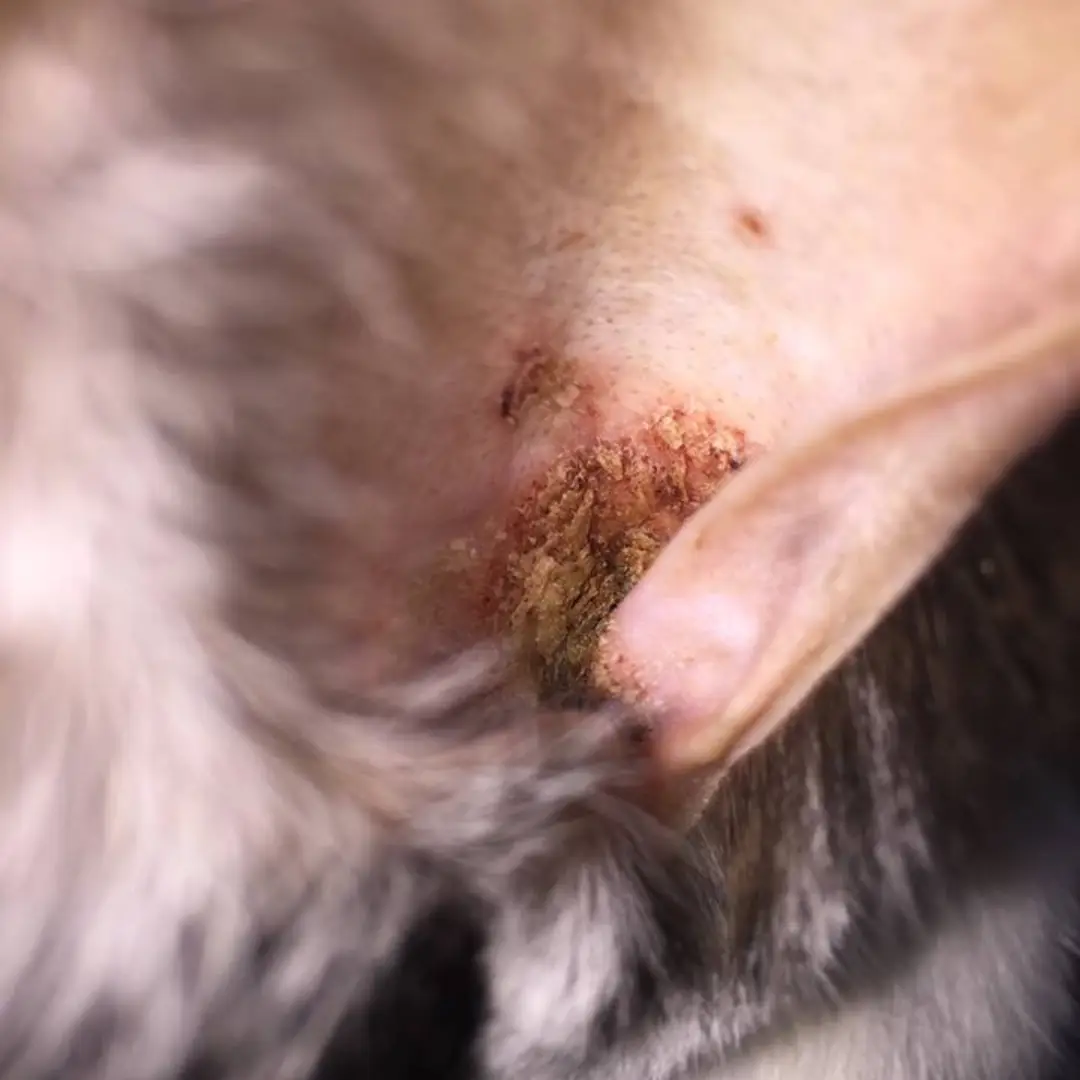
How Ear Mites Impact Your Rabbit’s Health
Beyond the itch and irritation, untreated ear mites can lead to nasty ear infections and even permanent damage. It’s heart-wrenching to see and definitely something we bunny lovers want to hop away from.
Fur Mites
On the flip side, we have the infamous fur mites known to experts as cheyletiella mites. They’ve earned the nickname walking dandruff because, well, it looks like your rabbit’s dandruff is on the move! 😲 These skin parasites chill on the skin surface and make themselves at home right under your bunny’s coat.
Recognizing the Signs of Fur Mite Infestations
Is your bunny experiencing fur or hair loss, especially around the shoulder blades or back? Does it seem like they’re constantly itching, an invisible itch? Then you may be dealing with a fur mite party. A skin scraping by your vet can uncover these skin problems and confirm the presence of these common parasites.
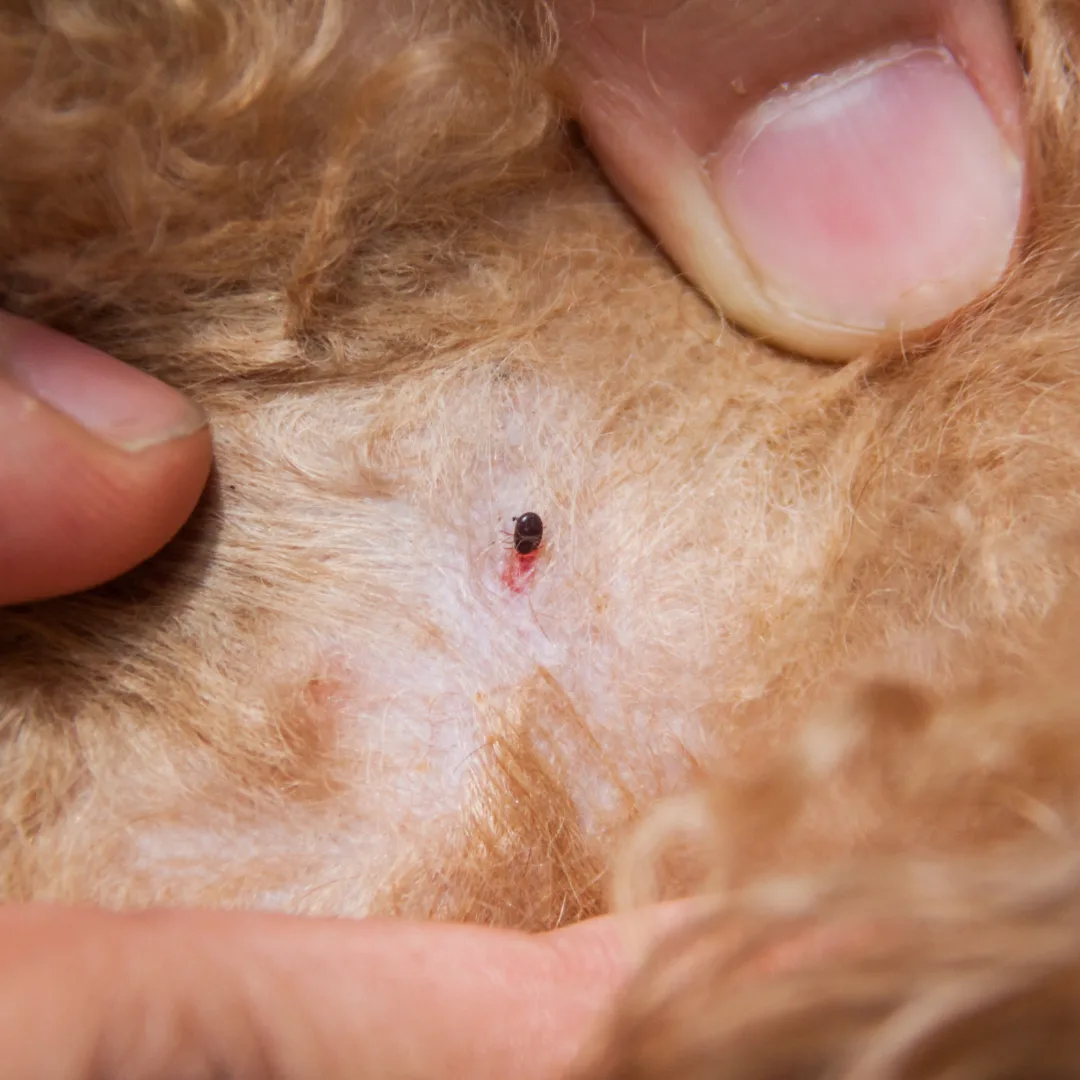
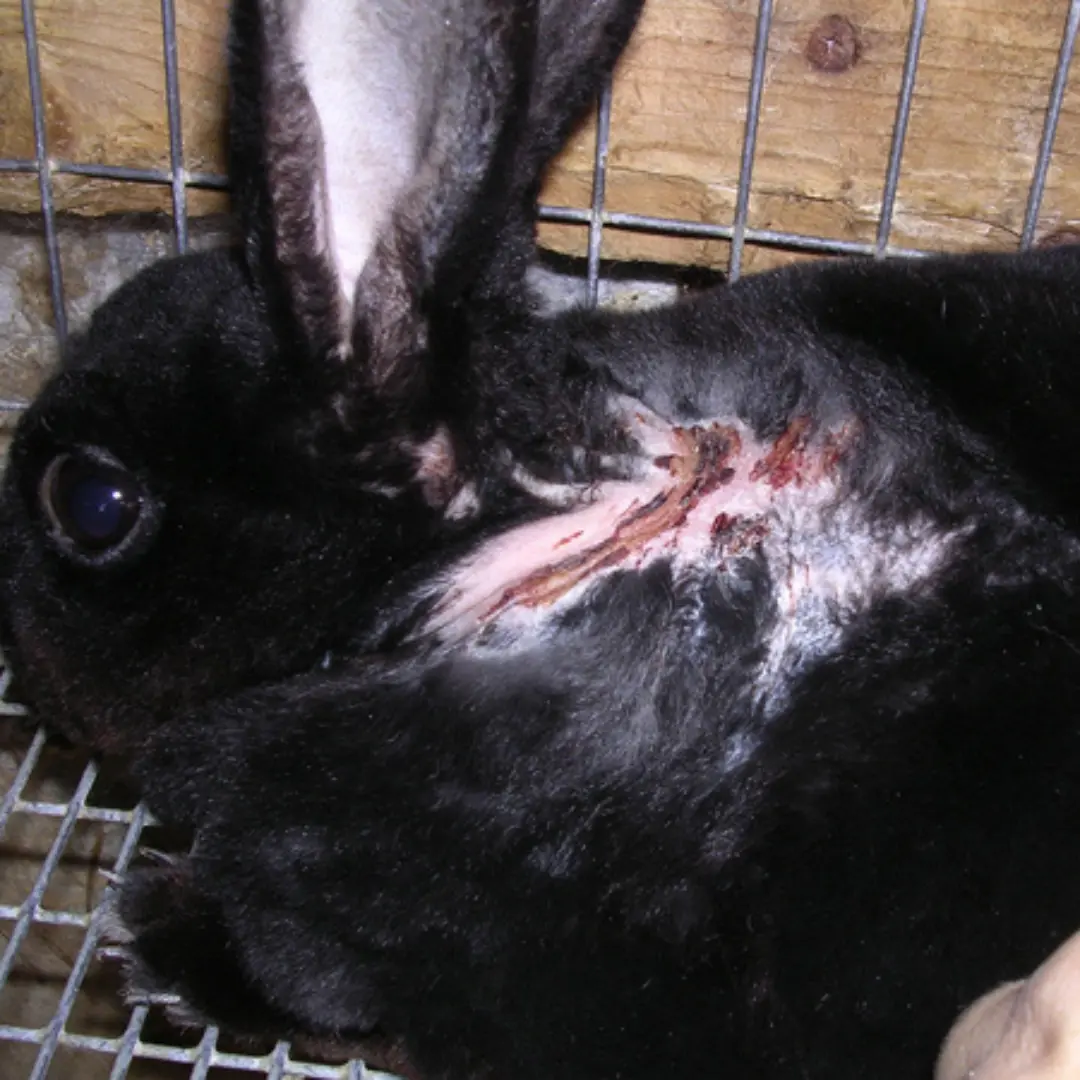
The Dangers of Fur Mites for Your Fluffy Friend
While fur mites might sound less scary than ear mites, they should not be taken lightly. A severe infestation can lead to skin damage and infections and even impact your rabbit’s white blood cells, leading to more health drama like dental disease or other skin issues. It’s a furry tale gone wrong.
How to Treat Mites in Rabbits
Treating mites in bunnies is super important, and it’s a bit like solving a fluffy puzzle 🐰.
Ear Mites Treatment
For those dreaded ear mites, hopping down the natural remedy trail can be safer and kinder to your bunny’s sensitive ears.
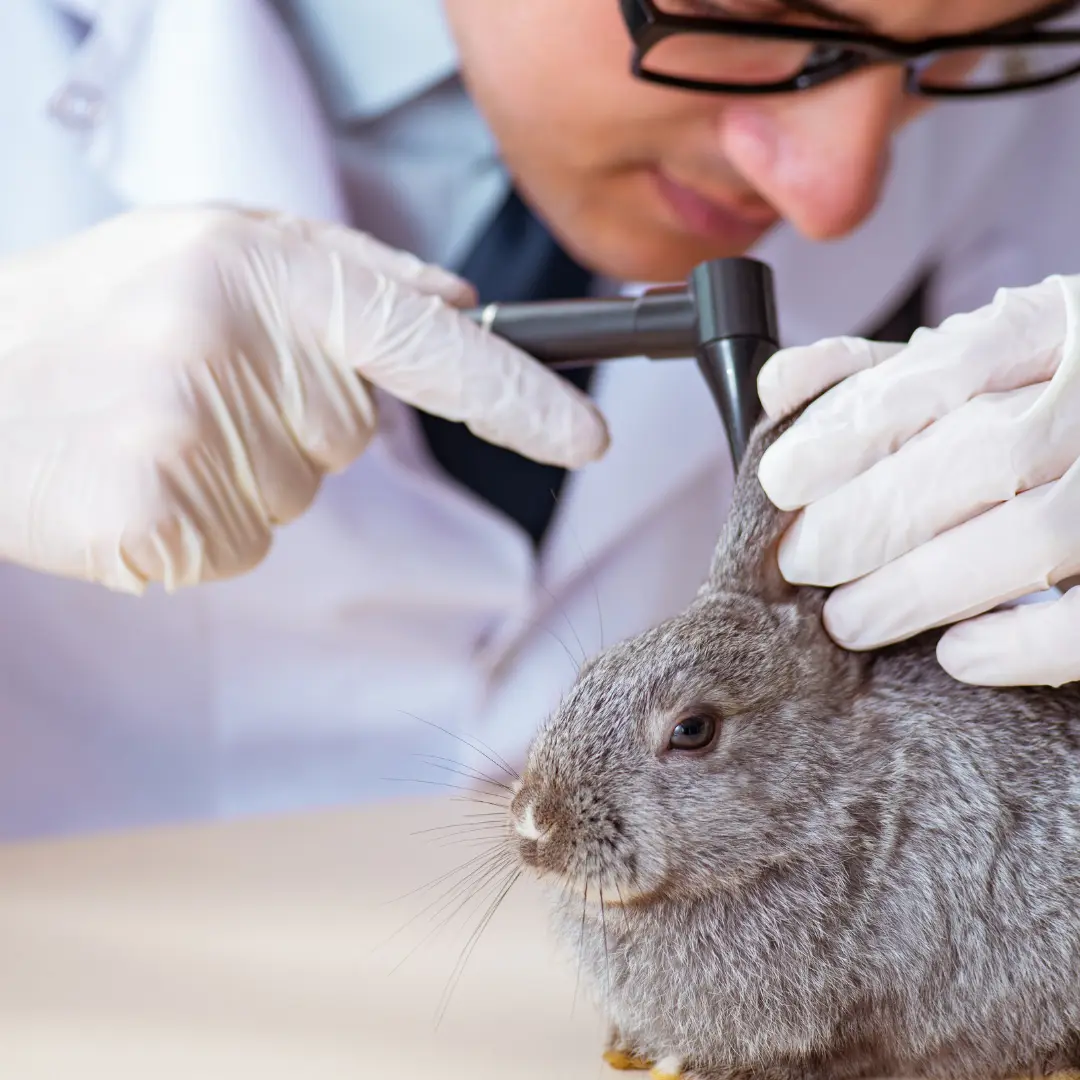
Over-the-counter meds can sometimes be too harsh, causing more eek than relief. I’ve found that a gentle cleaning with a mixture of white vinegar and water (half and half) can help. It balances the pH in the rabbit’s ears, making it less inviting for mites to throw a party 🎉.
However, it’s crucial not to remove any scabs – those are nature’s band-aids! 🩹
Fur Mites Treatment
For fur mites, it’s a different tale. Veterinary prescriptions are the go-to for mite control, acting like a super-bunny cape against those pesky common parasites.
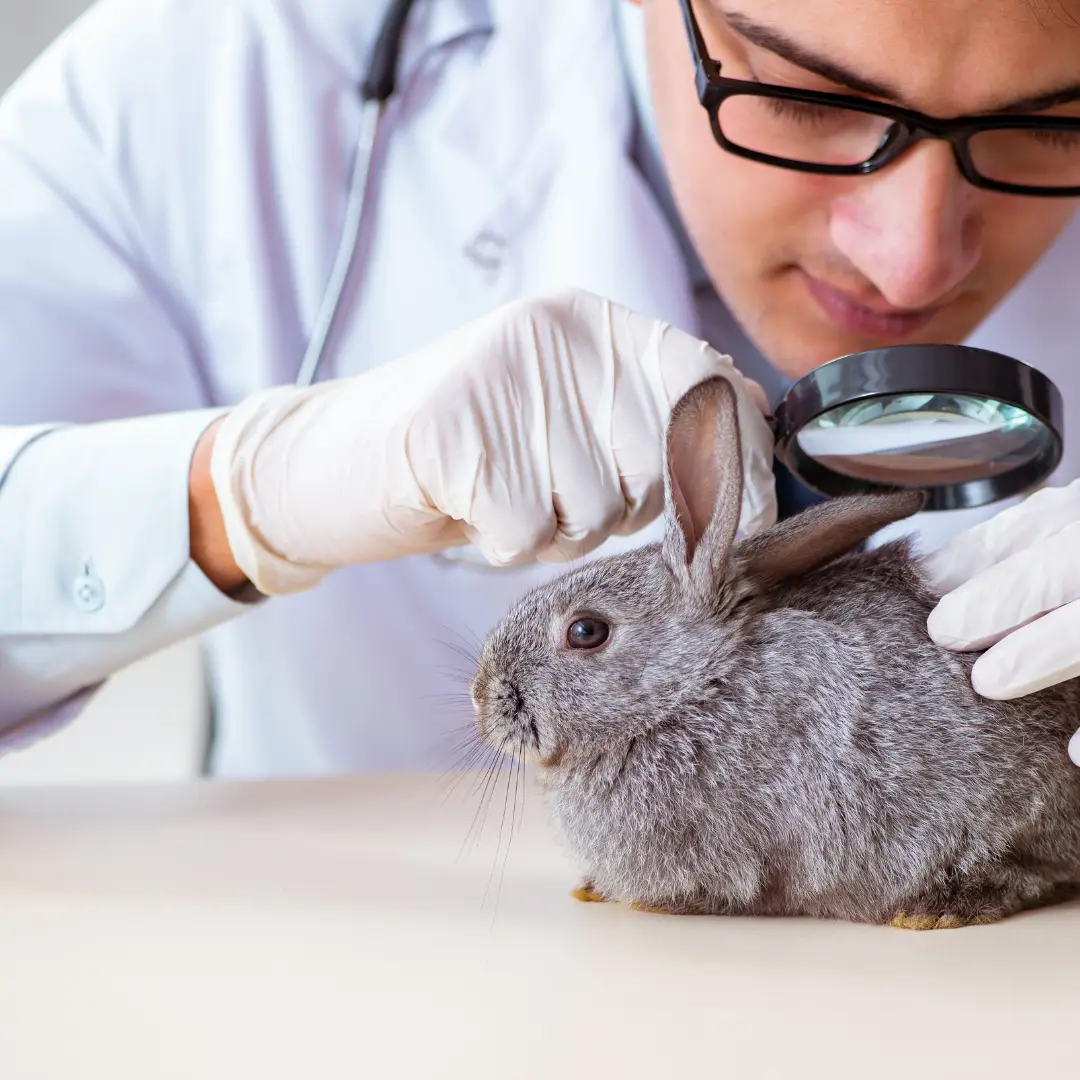
But don’t overlook the DIY home remedies either! A mild, soapy water bath, followed by thorough drying (think warm, fluffy towels, not hair dryers), can help manage the situation before it gets out of hand.
And trust me, making your bunny’s space cleaner than a rabbit’s whistle makes a huge difference. Changing to disposable bedding and ensuring everything is as tidy as a rabbit’s dining area helps prevent a mite encore.
Creating a clean, love-filled environment is vital. After the first treatment, whether it’s with the help of a vet or your own tender loving care, keeping everything spick and span reduces the chance of another mite saga.
Remember, preventing mites is far easier than treating them. Regular physical examinations, even at home, can keep you in tune with your bunny’s health needs. If your fluffy friend’s skin gets flaky or those ears seem itchier than usual, it might be time for a little extra care.
Being proactive in your rabbit’s care routine, keeping an eye on any changes in their fur or behavior, and maintaining a spick-and-span habitat can substantially decrease the odds of mite mayhem. And always, always consult your veterinarian doctor if things seem hopeless.
They’re the superheroes 🦸 in the world of veterinary medicine, ready to leap tall fences for the health of our furry friends. Together, you and your vet can ensure those mites hop out of your life! 🐾
Preventing Mite Reinfestations
Keeping those pesky mites at bay is simpler than you might think, and boy, do I have some tried-and-true tips just for you. 🐰✨
- Make room for grooming! Regular brushing not only keeps your bunny looking dapper but also helps you spot any sneaky signs of mites before they settle in for a long stay.
- Stay savvy with the vacuum! An oft-overlooked hero, the vacuum cleaner is your secret weapon in sucking up any mites or eggs lurking around in your bunny’s home space.
- Buddy system with your vet. Regular check-ups can catch things you might miss and keep your fluffer’s health in good condition. 🥕
- Hop to it with habitat hygiene. Keep their living quarters cleaner than a rabbit show at the county fair. This means frequent bedding changes and disinfecting their area with bunny-safe products.
- Beware of the carrot thief. Well, not really, but do quarantine any new fluff balls in a different rabbit cage or room before introducing them to your pets. New bunnies might bring unwanted guests, and it’s better to be safe than sorry!
- Keep your rabbits indoors when possible. Wild rabbits can carry mites and other pests that could infest your pet if they come into contact.
🚨 Remember, preventing a mite infestation is always better than treating one. So be proactive and keep those furry
Conclusion
Mites in rabbits are a common parasite, but with a pinch of prevention and a sprinkle of love, we can keep our cuddly companions happy and healthy. I’ve been through the wringer with my own fluff balls, and trust me when I say seeing them mite-free and binkying around without a care in the world is the ultimate reward. 🐇💖
Always remember to quarantine new arrivals to prevent the spread of this common parasite. And don’t forget, when it comes to mites, your bunny’s best pal is their fellow bunny, but also their biggest threat.
Related Questions
Can Rabbit Mites Infect Other Household Pets?
Absolutely, but don’t you worry your whiskers off! While certain mischievous mites prefer the company of our bunny buddies, some can indeed hop over to other furry family members, including dogs and cats.
Now, before you picture a mite mutiny marching across all your beloved pets, keep in mind that these little party crashers are generally more of an annoyance than a dire threat. And hey, it’s another reason for everyone to band together in a fluff-filled, united front against the common itch!
Just remember, keeping your critter castle clean and consulting with your vet can help keep dogs, cats, and other animals in your menagerie mite-free. 🐾💕


